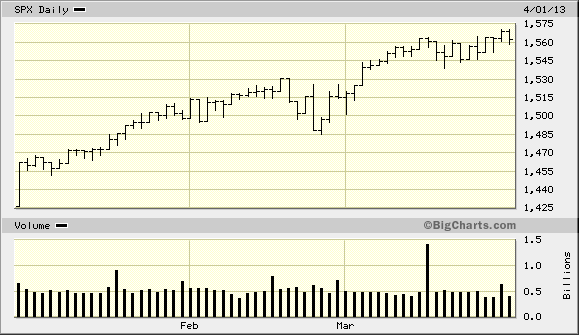Lost
among all the bullish predictions for the 2014 market outlook is a salient fact
that few Wall Street analysts are aware of.
What they fail to realize is that the powerful 40-year cycle bottoms
later this year.
Just
how powerful is the 40-year cycle? Well
consider that in the previous 120 years the 40-year cycle bottom has never
failed to produce a major market decline.
From the decline in late 1894 to the corrective pullback of 1934 to the
devastating decline of 1974, the 40-year cycle has always made its presence
felt in the stock market.
It’s
worth examining the 40-year cycle since its influence is already being felt as
we enter the first month of the new year.
The Kress 40-year cycle belongs to the category of yearly cycles of the
first magnitude and is described by Mr. Kress as the Primary Bias Cycle for
equities. The 40-year cycle is arguably
the most powerful of the long-term cycles which composite the Grand Super Cycle
of 120 years.
The
40-year cycle is also harmonic of the 20-year cycle and bottoms along with the
20-year cycle every fourth decade. The
most recent 40-year cycle bottom at the time of this writing was in October
1974 while the most recent peak of the 40-year cycle occurred in October
1994. The next 40-year cycle bottom is
scheduled for late September 2014, which coincides with the final low of the
latest Kress 120-year Grand Super Cycle.
The
40-year cycle has special significance in that it can be divided by the
Fibonacci number five as well as the Fibonacci number eight. The 40-year cycle is the product of eight
fives (8 x 5 = 40), with five being the number of dominance according to
Kress. Accordingly there are five 8-year
cycles within a complete 40-year cycle.
This
brings us to the next aspect of 2014 worth mentioning, namely that the 8-year
cycle is scheduled to bottom later this year.
Keep in mind that nearly every previous 8-year cycle bottom year was an
extremely rocky one for stocks. The
8-year cycle bottom years of 1998 and 1990 certainly come to mind. This is the cycle which is most likely to
witness trouble in the financial sector.
The
8-year cycle that bottomed in October 1998 was a powerful one, and before the
cycle put in its final bottom it was quite nearly disastrous to the U.S. and
global financial markets. It was one of
the catalysts, or at least had a negative impact, upon the notorious Long Term
Capital Management Group (LTCM) meltdown, a Russian hedge fund, which figured
prominently in the troubled headlines of the summer and fall of 1998. Concurrently, a crisis in the Russian ruble
along with a currency crises in Argentina and Brazil and a commodity market
breakdown made it seem as if the entire world’s financial system was on the
brink of collapse. The following graph
shows how sudden and severe was the final bottoming phase of the 8-year cycle
that year.
The
previous 8-year cycle bottom was in 1990, a year that was bad for stocks and
for bank stocks in particular. The Savings
& Loan (S&L) crisis was at its worse at that time and a large number of
savings institutions became insolvent that year. Indisputably, the 8-year cycle bottom made
its impact known to investors in 1990.
Prior
to 1990 the 8-year cycle bottomed in 1982, which marked the formal end of a
14-year bear market for stocks. The
great secular bull market of 1982-2000 was heralded by the 8-year cycle bottom
of ’82.
In
view of the two important long-term cycles bottoming this year, perhaps it’s no
coincidence that we’re witnessing a revival of emerging market troubles. Argentina is faced with the specter of
default while Brazil’s currency is under pressure. A potential debt crisis brewing in China has
the potential to roil global markets on a scale not seen since 2008. The Emerging Markets ETF (EEM) chart shown
below throws into relief the extent to which these countries are being roiled
by the final “hard down” phase of the 40-year cycle.
As economists have already discovered, an increase in deflationary pressure is possible further into 2014, which in turn could increase financial market volatility. Accordingly, investors should be prepared for anything and should remain leery of the unfettered optimism of Wall Street’s legions of ultra-bullish pundits.

















